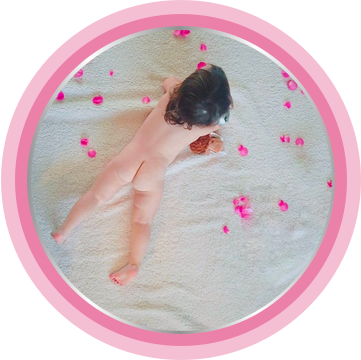Everything you need to know about mild sprain and how to deal with it
Most common injuries such as sprains are caused by minor trauma. It affects the muscles and ligaments. While you may feel lingering pain for several days, most of them can be treated at home. Find out more about this condition and how to properly manage it.

Defining sprain
A sprain is an injury to a ligament. Ligaments are fibers that connect two bones at a joint. For example, ligaments in the knee connect your upper and lower leg. This mechanism allows you to walk or run. When a sprain happens, ligaments are stretched or torn1. Sprains are mostly caused by trauma—either from a fall, twist, or blow to the body.
In a minor sprain, the ligament is stretched but the joint remains stable. Intensity can go up to the point that it affects bodily functions such as walking2. But all sprain cases cause pain, swelling, and inflammation.
The ankle is the most common location for a sprain3. Sports activities make it more likely for you to experience sprain. Other times, it’s mostly because you've had a previous injury at that particular spot.

Causes
Our bodies are subject to daily stress and pressure, therefore an occasional sprain is not that uncommon. But there are certain situations that make it more likely to injure your joints4. These include:
- Lifting heavy objects
- Accidents such as falling or slipping on a wet surface or uneven ground
- Sports activities and exercise
- Prolonged and repetitive motions
- Being in an uncomfortable position
Anything that causes sudden stress or knocks out the joint from its position can result in a sprain. Undeniably, athletes experience this type of injury the most. For example, rolling of the ankle during a marathon or taking a direct hit to the body during contact sports. The most commonly affected joints are the wrist, thumb, ankle, knee, and back5.

Symptoms
In minor cases, sprain causes pain and swelling at the injured area along with joint tenderness. During a sprain, your body releases chemicals called prostaglandins6. These chemicals are important in triggering inflammation which helps to protect the injured area. Don’t fret, inflammation is normal—it’s how our bodies react to the pain.
Other symptoms you may experience, include:
- Bruising and swelling
- Difficulty bearing weight on the injured area
- Muscle spasms or cramping
Risk factors
Almost anyone can experience sprain at some point in their lives. But there are certain risk factors that can increase your odds7:
Being overweight and inactive. Lack of proper physical activity leaves your muscles and joints weak.
Improper clothing and equipment
Wearing worn out or ill-fitting clothing may cause injuries. Always use protective gear especially during contact sports or when using gym equipment.
Not warming up
Without a proper warmup period, your muscles will remain tight, and less flexibility means greater risk for injury.
Fatigue
Overexerting yourself can lead to more harm. Allow time for your body to recover and heal.
Environment
There are also factors that are beyond your control. Wet, slippery, uneven surfaces aren't ideal for physical activities. While you can’t avoid them entirely, being aware is already a good precautionary step.

Prevention and treatment
Mild sprain can be treated using the R.I.C.E. method8:
- Rest: Avoid bearing weight on the injury.
- Ice: Apply ice over the injured area to relieve pain and swelling.
- Compression: Wrap the injured area with an elastic bandage.
- Elevate: Keep the injured area elevated on a pillow.
Following this method, your pain will most likely subside in the next 24 to 48 hours. If not, it’s best to consult a healthcare professional as your injury could mean something else.
Although no one can really prevent sprains from happening, you can always take preventive measures. Make sure that you get a proper warm up and cool down period before and after physical activities. Observe an active lifestyle to strengthen your muscles but don’t overdo it. Let your body recuperate after a long, strenuous activity or workout. Lastly, always wear proper clothing to avoid accidents that can result in injury. Minor sprains are not something to worry about. It’s something that people will experience at least once in their lives. It causes extreme pain and discomfort but is easily treated. Most of the time, home care and adequate rest is enough. Get professional help if symptoms persist exceeding 48 hours after the occurrence of injury.
References:
- Sprains and strains (n.d). Accessed September 21, 2020 from http://www.childrenshospital.org/conditions-and-treatments/conditions/s/sprains-and-strains
- Sprains, Strains, Breaks: What’s the Difference? (n.d.). Accessed September 21, 2020 from https://www.urmc.rochester.edu/encyclopedia/content.aspx?contenttypeid=1&contentid=1889
- Sprains and strains (n.d.). Accessed September 21, 2020 from https://www.niams.nih.gov/health-topics/sprains-and-strains#tab-risk
- Sprains of the Ankle, Knee and Wrist (n.d.). Accessed September 21, 2020 from https://my.clevelandclinic.org/health/diseases/15461-sprains-of-the-ankle-knee-and-wrist
- SportsSprains (n.d.). Accessed September 21, 2020 from https://www.upmc.com/services/sports-medicine/conditions/sprains
- Sprains and strains - causes, symptoms, and treatment (n.d.). Accessed September 21, 2020 from https://www.nurofen.co.uk/blogs/symptoms-advice/sprains-and-strains
- Sprains (n.d.). Accessed September 21, 2020 from https://www.mayoclinic.org/diseases-conditions/sprains/symptoms-causes/syc-20377938
- Sprains and strains (n.d.). Accessed September 21, 2020 from https://www.nhs.uk/conditions/sprains-and-strains/




